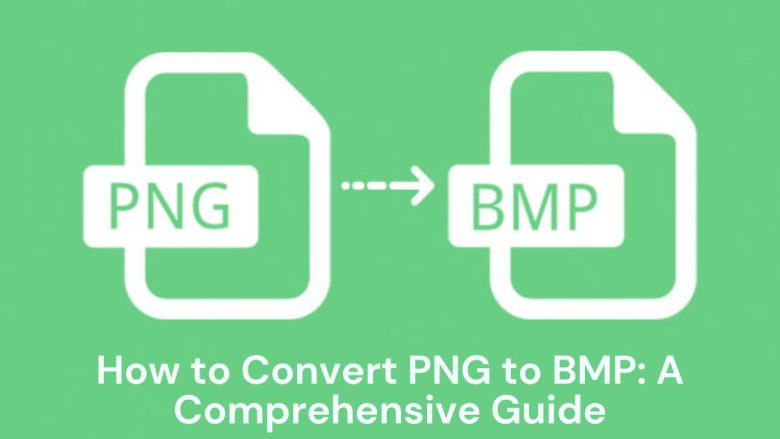
In the realm of digital imaging, various file formats serve different purposes. Two commonly used formats are PNG (Portable Network Graphics) and BMP (Bitmap). Each has its own strengths and use cases. This guide will show you how to convert PNG files to BMP. It will explain the benefits of the conversion, the steps, and how to use the FileProInfo PNG to BMP Converter for a smooth transition.
Understanding PNG and BMP Formats
Before starting the conversion, let’s look at the PNG and BMP formats. Their uses and traits are key.
What is PNG?
PNG is a popular image format. It has lossless compression and supports transparency. PNG was developed as an alternative to GIF. It provides high-quality images without any data loss. It’s widely used on the web due to its ability to maintain image integrity while reducing file size.
Key Features of PNG:
- Lossless Compression: Preserves image quality while reducing file size.
- Transparency Support: Allows images to have transparent backgrounds, ideal for web design and graphic elements.
- Wide Compatibility: Supported by most modern web browsers and image editing software.
Common Use Cases:
- Web graphics, logos, and icons.
- Images requiring transparency or high-quality detail.
- Applications where maintaining image integrity is crucial.
What is BMP?
BMP, or Bitmap, is an older image format that stores pixel data in an uncompressed form. This results in large file sizes but ensures high image quality. BMP files are simple and have no compression artifacts. So, they are useful for some applications.
Key Features of BMP:
- Uncompressed Quality: Maintains original image quality without any loss.
- Large File Sizes: Due to lack of compression, BMP files are generally larger.
- Limited Use: Less commonly used on the web and may require additional software for viewing.
Common Use Cases:
- Professional graphic design where high-quality images are required.
- Situations where image compression artifacts are unacceptable.
Benefits of Converting PNG to BMP
Converting PNG files to BMP can offer several advantages depending on your needs. Here are some reasons why you might consider making this conversion:
1. Enhanced Readability
Some apps may read BMP files better. They retain all pixel data, with no compression. If you need to work with an image where clarity is crucial, convert it from PNG to BMP. This will ensure no data is lost.
2. Legacy Software Compatibility
Some older software and systems are designed to work with BMP files. If you have legacy systems that don’t support PNG, convert your PNG files to BMP. This will ensure compatibility.
3. Simpler Editing
For some image edits, BMP files might be easier to use. BMP files are uncompressed. So, they lack the complexity of compression algorithms. These can affect image editing in PNG files.
4. Archiving and Preservation
For long-term image storage, use BMP files. Their uncompressed nature is beneficial. This keeps the original image data intact, with no degradation over time.
How to Convert PNG to BMP Using FileProInfo
The FileProInfo PNG to BMP Converter provides a convenient and free way to convert your PNG files to BMP. Follow these steps to perform the conversion:
Step 1: Access the FileProInfo Converter
Visit the FileProInfo PNG to BMP Converter page. The tool is user-friendly. It aims to make conversion easy.
Step 2: Upload Your PNG File
On the converter page, you will see an option to upload your PNG file. You can drag and drop the file into the area. Or, click the upload button to select the file from your computer. The maximum file size allowed is 150 MB, which covers most PNG files.
Step 3: Start the Conversion
After uploading your PNG file, click the “Convert” button. The FileProInfo tool will process the file and convert it to BMP format. The conversion typically takes only a few moments, depending on the file size.
Step 4: Download Your BMP File
Once the conversion is complete, a download link for your BMP file will appear. Click the link to download the converted file to your device. Your BMP file is now ready for use.
Additional Tips for PNG to BMP Conversion
To ensure the best results from your conversion, consider the following tips:
1. Verify Image Quality
Check the quality of the converted BMP file to ensure that it meets your expectations. BMP files should retain the original quality of the PNG images, but it’s always good to confirm.
2. Understand File Size Implications
Remember that BMP files are larger due to their uncompressed nature. Be prepared for larger file sizes compared to the original PNG files.
3. Check Compatibility
Ensure that the BMP file is compatible with the software or system you plan to use it with. BMP is a well-known format. But, check if specific apps are compatible with it.
4. Maintain Original Files
Keep a backup of your original PNG files. This ensures you have the source files if you need to revert or use them in their original format.
5. Consider File Optimization
If the BMP files are too large, consider optimizing them or trying other formats.
Conclusion
Converting PNG files to BMP can help. It improves readability, compatibility with old systems, and makes image editing easier. The FileProInfo PNG to BMP Converter is a free, efficient tool. It makes it easy to convert your images.
This guide’s steps will let you convert your PNG files to BMP. You will gain the unique benefits of the BMP format. Converting to BMP is a practical choice. It helps with legacy systems, image archiving, and app compatibility. Visit the FileProInfo PNG to BMP Converter to start your conversions.


